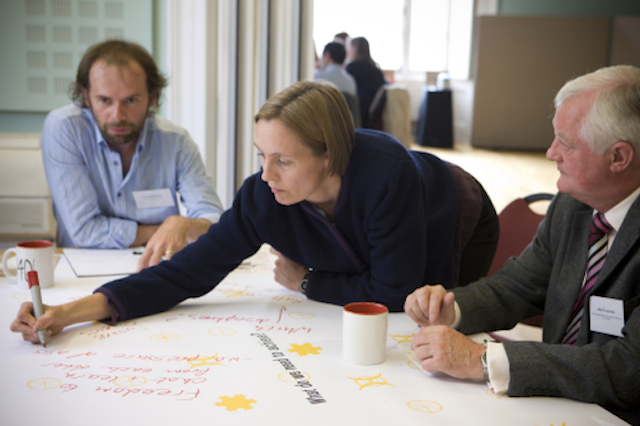Reading and writing an effective design brief
A Think Up Event

Description
This day-long workshop focuses on one key step in the design process – the reading and writing of effective design briefs. This is the stage at the start of the design process at which the key parameters are set which can influence the entire nature of the final design. It is a stage at which misunderstandings can have significant long-term consequences; it the stage at which designers must check that the right problem is being solved; it is a stage at which a great deal of value can be added to the outcome. It is crucial therefore that professionals working in the early stages of a design project have the skills to read and write an effective design brief.
Our approach goes much deeper than simply understanding the written requirements of a design brief. On this course we encourage participants to think about the missing information in a brief: the implied, the assumed, and critically, the unknown. Drawing out this hidden information is key to reading and writing a good brief. We also consider the relationship that the brief has to all the other stages in the design process, and how the brief itself may change over the course of the design. Understanding design briefs is about understanding people, and so we use a role-play-based approach to get under the surface of a written brief.
The content and delivery method for this course is drawn from over fifteen years of design teaching for engineers at universities and in business. Our approach at Think Up is always to provide practical guidance so that participants can go away and apply the techniques immediately and feel the benefits in the short-, medium- and long-term.
Aimed At
Built environment professionals with 2+ years of design experience.Learning Outcomes
- Describe the relationship between the brief and the other stages in the design process
- Describe the problems that arise from misunderstanding in the brief.
- List the characteristics of a good design brief
- Recognise and describe hidden information in a brief
- Define the concept of the ‘Designer’s paradox’ and describe techniques for resolving it.
- Use a range of techniques for better understanding a client’s needs
Related Events
- Conceptual design skills for engineers: 4-week course on 28 Sep 2017
- How to have ideas on 19 Apr 2024
- Modelling and testing – the art of choosing and improving ideas on 19 Apr 2024
Date: To Be Arranged
Host Organisation
Think UpLocation
The Clove Building
4 Maguire Street
London
SE1 2NQ